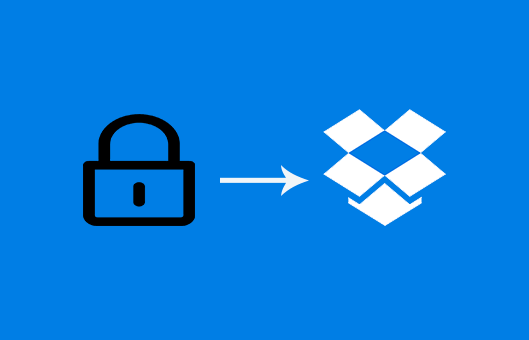Ever hesitate to share Dropbox folders due to privacy concerns? Worry no more! This comprehensive guide teaches you how to protect Dropbox folders with password restrictions. We'll walk you through the simple process of adding password protection, so you can share your folders confidently. No more compromising security for collaboration. Discover how to protect Dropbox folders with password in just a few clicks!

It is crucial to make sure your data is secure on the cloud. A popular cloud storage service that makes file sharing and file storing easy is Dropbox. But what if you want to add an additional layer of security because a Dropbox folder contains critical information? This tutorial examines your options for password-protecting Dropbox folders, looking at both built-in capabilities and add-ons.

Although Dropbox has a lot of functionality, one cannot manually password-protect folders within the app at this time. Some customers may be surprised by this, but it's crucial to comprehend Dropbox's fundamental features. It prioritizes accessibility and cooperation and is excellent at file syncing and sharing.
However, there's a silver lining for Dropbox Professional and Teams users. These plans offer the ability to add password protection to shared links. This means when you share a folder using a link, you can restrict access by requiring a password to view or download the contents.
Here's how to create a password-protected shared link on Dropbox:
1. Log in to dropbox.com and navigate to the folder you want to share.
2. Click the "Share" button.
3. If a link hasn't been created yet, click "Create link" and copy the link.
3. Click the gear icon in the top right corner and choose "Link settings".
5. Select "Link for viewing" or "Link for editing" depending on the desired access level.
6. Toggle on "Require password" and set a strong password.
7. Click "Share" to distribute the link.
1. Open the Dropbox app and locate the folder.
2. Tap the ellipsis (...) next to the folder name.
3. Select "Share" and choose "Link for viewing" or "Link for editing".
4. Tap "Modify settings" and enable "Require password".
5. Set a strong password and tap "Save".
6. Share the link with your collaborators.
Third-party encryption solutions can be a good option if you need a more comprehensive security solution. It is possible to encrypt a folder locally using these tools before transferring it to Dropbox. As a result, even when the data is on Dropbox's servers, it is further protected.
Numerous encryption tools are available, both for free and for a cost. When selecting one, take into account the following factors:
Here's a general process for encrypting a Dropbox folder using a third-party tool:
1. Choose Your Encryption Tool: Download and install the chosen encryption software.
2. Locate Your Dropbox Folder: Navigate to the folder you want to encrypt on your local machine.
3. Encrypt the Folder: Use the encryption tool to encrypt the folder. This might involve setting a password and choosing the encryption algorithm.
4. Upload the Encrypted Folder to Dropbox: Once encrypted, upload the folder to your Dropbox account.
Important Note: Remember to keep the encryption password secure. Losing this password could render your files inaccessible. Some tools offer additional features like password recovery options, but these might come with limitations.
Here are several crucial security procedures for Dropbox users, even if you don't use password-protected folders:
The best approach to password-protecting your Dropbox folders depends on your specific needs. For basic security, password-protected shared links (available in Dropbox Professional and Teams) offer a convenient solution. However, if you require maximum data security, consider using third-party encryption tools. Remember to prioritize strong passwords and two-factor authentication for overall account security.
There is a way to automatically move data between Dropbox and other cloud services, such as Google Drive, OneDrive, and iCloud Drive, and that is MultCoud. MultCloud is a cloud management service that lets you connect multiple cloud storage accounts in one place. Imagine having a universal remote for all your cloud services; that’s exactly what MultCloud does!
With features like cloud transfer, sync, and backup, MultCloud takes the pain out of managing your files across platforms. You can easily move, copy, or even sync your data without downloading it first!